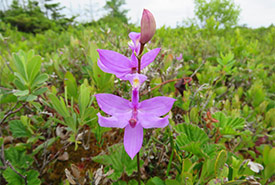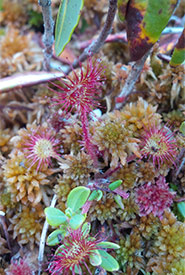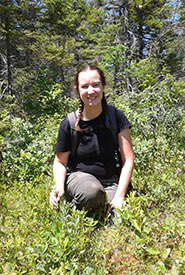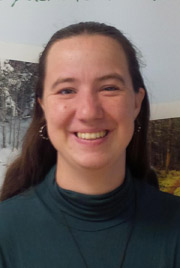The unloved bog

Grass pink in the bog at Escuminac, NB. (Photo by Claire Elliott)
Bogs are the unloved wetland. People like marshes because they’re full of ducks and frogs, and swamps can be fascinating for those who love alligators and turtles. But bogs are commonly viewed as swallowers of machinery and unwary hikers, or at the very least as land that is useless for anything human-related.
On one level, I do understand the lack of appreciation for bogs. I understand it best when I am admiring the peat moss that forms them from far too close because I've tripped and fallen into the bog. Then, I am less appreciative of bogs.
I was also very unappreciative of a bog last summer when I tried to haul myself out of one while collecting plants and found myself on an unstable, floating mat of peat moss that threatened to dump me back in the black, murky water if I stood up. I had to crawl along the floating mat in my chest waders in a rather undignified manner back to solid ground, and I was not so appreciative then.
But I should have been! Even while teetering on the edge of my unstable mat, there was a pink dragon’s mouth orchid within arm’s reach and a tiny frog eyeing me warily from the edge of the water.
The problem with bogs is that most of what goes on in them isn’t flashy. Take, for instance, a raised bog along the Acadian Shore of New Brunswick in July. You look across it and it seems like a barren expanse; until you get closer. Then, you realize that it’s carpeted in tiny pink orchids and punctuated with hexagonal bog laurel flowers.

Round-leaved sundew growing in the peat moss in a raised bog in Escuminac, NB. (Photo by Claire Elliott)
Kneeling to look at the delicate blooms, you realize that each hummock of peat moss is covered in tiny, carnivorous plants called round-leaved sundews. Each five-centimetre-tall plant extends round leaves, edged with sticky, delicate hairs, to catch unwary insects. Farther out, there are tufts of cottongrass waving lazily in the breeze.
Overhead there are bank swallows zipping past, chasing the insects on which they feed. Their nests are actually burrows carved in the peat of this bog, where it drops away to the beach and leaves a small cliff. Even the peat itself changes in waves of colour depending on the species of moss. It can be orange, red, brown or green.
Or, if you were raised in a land of sunken bogs like me, you might imagine peat moss islands punctuated by pools of water, home to leopard and green frogs. Scraggly black spruce and tamarack trees dot the landscape and pitcher plants are more common than orchids. Often, this sort of bog, or a variation of it, could be only metres from the ocean waves washing over the granite bedrock lining the shore.
I've always loved this kind of bog, but it was dangerous on family hikes along the ocean. If there were any signs of ripe cranberries at all, we would lose at least three people until every available berry was tucked into a pocket or a hat, to be taken home and frozen for later.
The unfortunate thing about being an unloved wetland such as a bog, raised or sunken, is that this habitat is very delicate. Bogs take hundreds of years to form. They accumulate layers of peat over the years and create acidic conditions in which only certain plants can survive. Normally, flowing water would deposit nutrients for plants to use. But in a bog, all the water comes from precipitation. This means that plants grow very slowly. The damage done by a single ATV trail through a bog can take decades to repair. In a way, a bog’s standoffishness is its way of protecting itself.

Joanna Hudgins, NCC intern, happy to be in a bog in the Chignecto Isthmus, NB, with a white-fringed orchis. (Photo by Claire Elliott).
One of the more creative ways for monitors and researchers to travel across bogs and mitigate the damage of their visits is to wear snowshoes. Having been a child who delighted in watching unwary friends tumble head over heels into the snow the first time they strapped on my snowshoes, I feel like this could be an adult version of the same memory. But bogs require whatever protection we can give them, and if that means wearing snowshoes in summer while conducting research, then so be it.
Bogs may not be as filled with life as a marsh, but they boast a unique ecosystem of their own. So the next time you find yourself on the edge of a bog, stop for a moment and look carefully. You might find a whole new world, full of tiny carnivorous plants and a rainbow of sphagnum moss.


